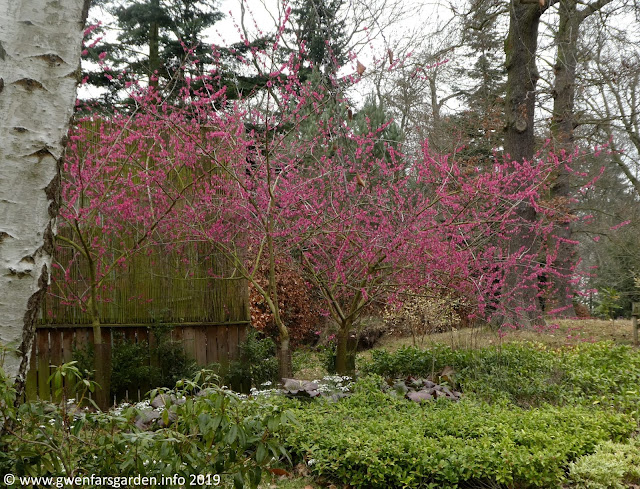Having visited Hodsock Priory on the weekend (mid February), where they not only have a woodland carpeted with snowdrops, but also an ornamental garden, it reminded me of just how many plants are flowering in late winter. So I thought I’d share photos of these, plus some from my own garden, to help give people more idea of what you can plant to help pollinators at this time of the year.
Note, this has been a milder winter. In colder ones such as 2017/18, the plants could flower later. Unless otherwise noted, these will grow on all soil types (acid, neutral and alkaline). These plants all grow in a temperate climate, in the UK down to hardiness zone H5, circa -15 celsuis, and USDA zones 7 and 8.
* * * * *
First of all, there are snowdrops (Galanthus). Here’s a selection from Hodsock. One of my favourite flowering cherries, Prunus Mume, which has an almond-like fragrance to go with the stunning, stops you in your tracks, pink flower. Winter flowering honeysuckle, such as the shrub Lonicera fragrantissima, which is indeed incredibly fragrant. Winter aconite, Eranthis hyemalis, which seems to prefer neutral to alkaline soil. I found it can flower on acid soil, but is less likely. Here are Witch hazel (Hamamelis, top left) which is also fragrant, large bushy Lonicera fragrantissima, Eranthus and Galanthus. Hellebores, which in fact flower all through mild winters. Iris, the first from Hodsock (unknown variety), the second, Iris histroides ‘Lady Beatrix Stanley’, from my garden. Sarcococca, also known as sweet box or Christmas box, another wonderful winter fragrant shrub. The first is Sarcococca confusa from Hodsock, the second is Sarcococca hookeriana var. digyna ‘Purple Stem’ from my garden.




















Thank you for providing these lovely photos illustrating your notes. I look forward to finding out if any of these will work here in New England.
Ah, hardiness zones. I've now added this: these plants all grow in a temperate climate, in the UK down to hardiness zone H5, circa -15 celsuis, and USDA zones 7 and 8.
Sadly I didn't make it over to Hodsock this year, so it's great to catch up via your blog. A couple of weeks ago it was bone aching cold at Wakehurst… so it was a bit surprising to see a fat bumblebee bothering the enormous witch hazel there.
What a wonderful variety of flowers you saw at Hodstock. I also have chaenomeles, anemone blanda, scilla sibirica, erica, iris unguicularis, primroses and camellia as well as all the ones you mention. The garden is certainly buzzing at the moment.
I bought a sarcococca Purple Stem from Hodsock after walking past the group of sarcococca there which was literally a buzz with bees. The perfume is gorgeous. Have you been to Hodsock when the bluebells are flowering? I think that’s even more impressive than the snowdrops.
I have an amusing image of a bumblebee bothering a witch hazel 🙂 Hodsock is pretty close to us, so it's easier to get to that most other snowdrop/winter gardens. Maybe we could arrange to meet up there next year?
They are some great suggestions. I'll insert them in to the post and credit you. If I recall, you live further south from me, so that's another factor I hadn't thought of, when it comes to what might be flowering in late winter.
I haven't seen the bluebells at Hodsock, though have seen them at Renishaw Hall gardens, which is quite close to Sheffield. I must try and see the bluebells at Hodsock if I can this year.